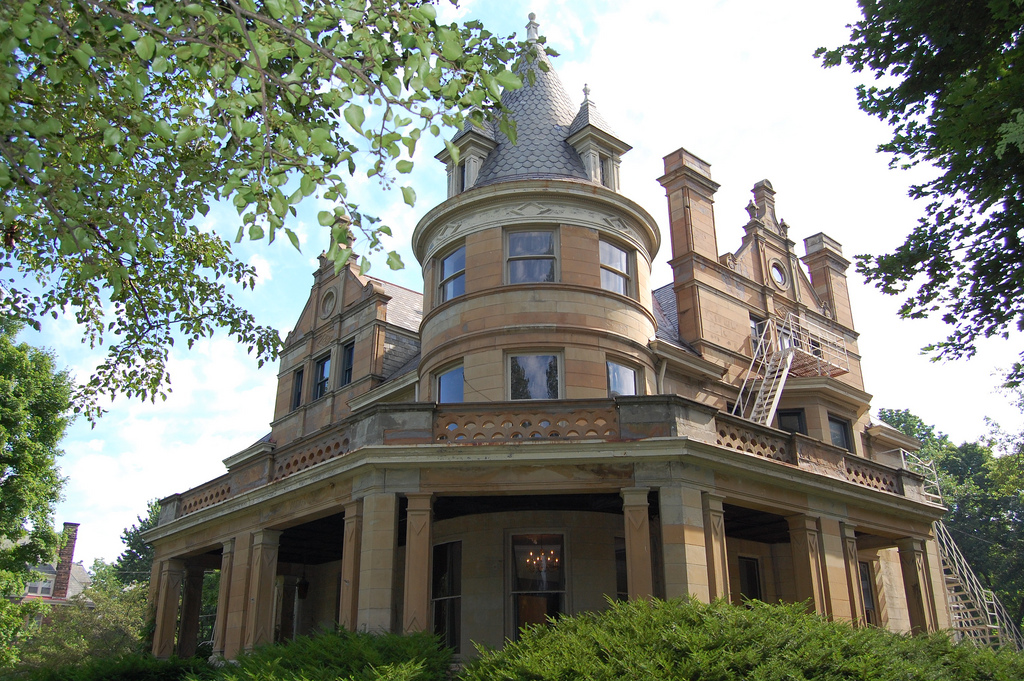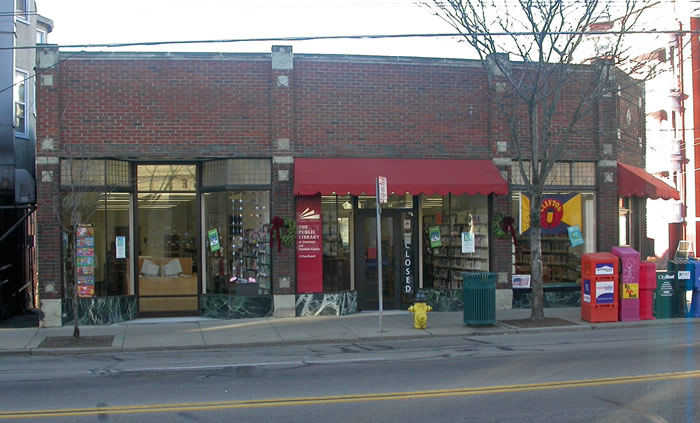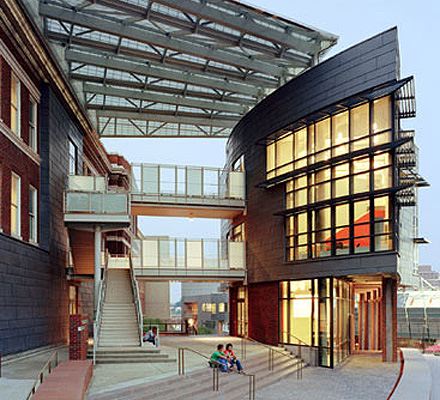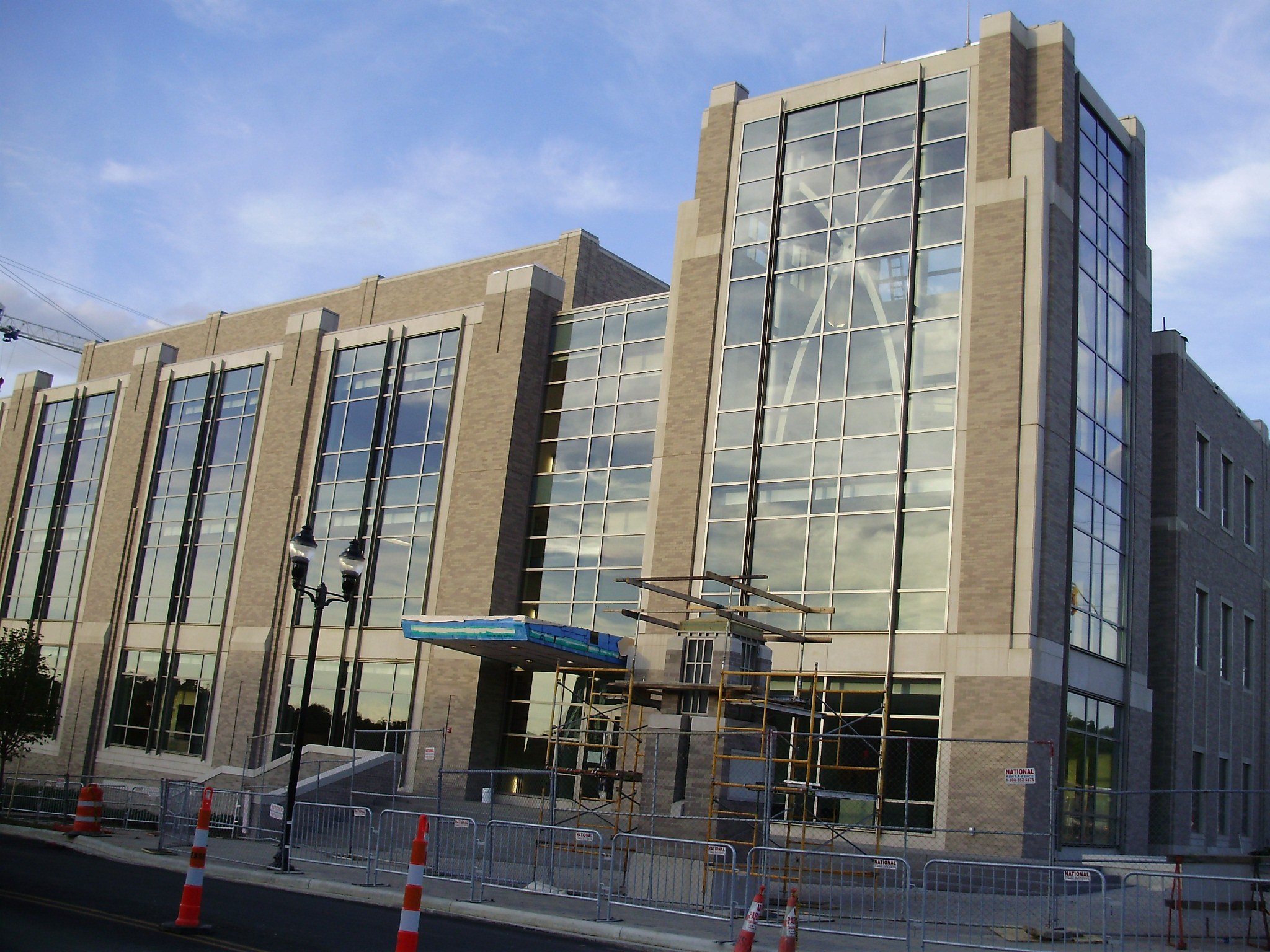The Public Library of Cincinnati & Hamilton County will move its Clifton Branch from Ludlow Avenue to Parkview Manor nearby. The $3.5 million project will require a full renovation of the 1895 home for notorious Cincinnati politician George Barnsdale “Boss” Cox.
Once the home of arguably Cincinnati’s most influential politician, the 10,000 square-foot Parkview Manor was designed by the famed Samuel Hannaford and is located directly across from Burnet Woods near the intersection of Brookline, Wentworth and Jefferson avenues (map). Hannaford’s trademark use of limestone coursing and geometrically shaped rooms are visible here. The architect’s firm, Hannaford and Sons, completed over 300 buildings in the Cincinnati area, including both Music Hall and City Hall.
Boss Cox meanwhile was known for controlling the goings on in Cincinnati through the Reform movement of the late 1800s. While his methods of governance were dictatorial and corrupt, Cox also made contributions to the city, including street cleaning and developing the plan for the ill-fated subway system.
The existing Clifton Branch of the Public Library is currently one of the busiest, and smallest, in the entire county-wide system. Its location on Ludlow Avenue does not have a dedicated meeting space, yet last year the branch presented 232 programs which were attended by 5,281 people. The programs included a wide variety of topics including a weekly preschool story time and an English as a second language conversation group.
Circulation at the Clifton Branch has increased more than 12 percent over the past four years, which library officials believe is evidence that demand for the library is far exceeding the current capacity. The new location would be four times the size of the current building on Ludlow Avenue. The new facility would also allow for a larger material collection space, more computer space, a dedicated children’s area, program room, teen area, and an easily accessible location with 16 parking spots in an extremely walkable neighborhood.
In order to make this dream a reality, library officials need to raise $3.5 million to renovate Parkview Manor and complete the move. The library is actively seeking contributions for this project, and those interested in helping can contact development director John Reusing at (513) 369-4591 or through the project’s web page.










